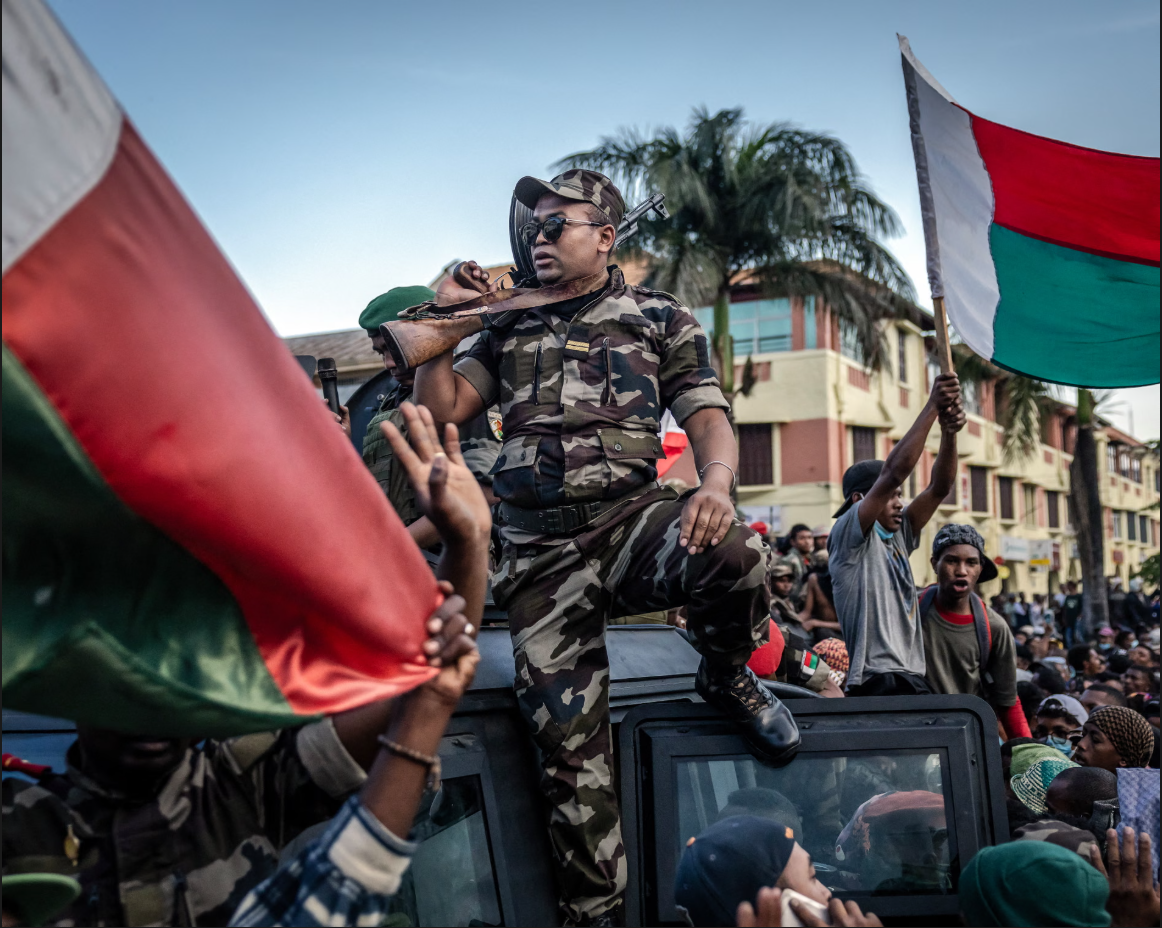Madagascar Military Unit Takes Control Amid Protests; President Calls it Coup Attempt
An elite military unit in Madagascar has announced it is taking control of the army following weeks of widespread, youth-led protests. President Andry Rajoelina has condemned the move, calling it an “attempt to seize power illegally and by force.”
The military’s intervention follows weeks of demonstrations led by young people. The protests, which began on September 25 over water and electricity shortages, grew into a larger movement demanding President Andry Rajoelina’s resignation, an end to corruption, and a complete overhaul of the political system.
In a statement on Sunday, President Rajoelina confirmed he was “in the country … managing national affairs” and informed the nation that an illegal attempt to seize power was underway. This came after the newly appointed prime minister, Ruphin Fortunat Zafisambo, had stated on television that the government was ready for dialogue.
On Sunday morning, soldiers from the Capsat unit, the same group that helped Rajoelina take power in a 2009 coup, announced in a video statement that they were taking command of the military.
Later that day, the head of the Capsat unit, General Demosthene Pikulas, was officially installed as the new chief of the army staff. The armed forces minister, Manantsoa Deramasinjaka Rakotoarivelo, attended the ceremony and said of the new chief, “I give him my blessing.”
Speaking to journalists, General Pikulas acknowledged that recent events were “unpredictable.” He stated, “The army has a responsibility to restore calm and peace throughout Madagascar.” However, he refused to discuss politics when asked if he called for the president’s resignation.
The takeover followed events on Saturday when the Capsat unit publicly sided with protesters. They announced they would not fire on citizens and, accompanied by thousands of cheering protesters, drove armored vehicles to the symbolic May 13 Square in the capital, Antananarivo.
The unrest has led to casualties. A Capsat general reported one of their soldiers was killed by the gendarmerie (military police) and a journalist was shot. While the UN reported at least 22 deaths since the protests began, President Rajoelina disputed this, claiming 12 “looters and vandals” had died.
The protests on the Indian Ocean island of around 32 million people were initially coordinated by a youth group called Gen Z Madagascar. After Rajoelina fired his government on September 29 in response to the unrest, protesters rejected the move as insufficient and continued to demand his resignation.
Despite the military’s apparent support for the protests, some young activists expressed concern about their intervention, with one calling the soldiers “dangerous.” The political turmoil is unfolding in one of the world’s poorest nations, which struggles with high levels of corruption.
